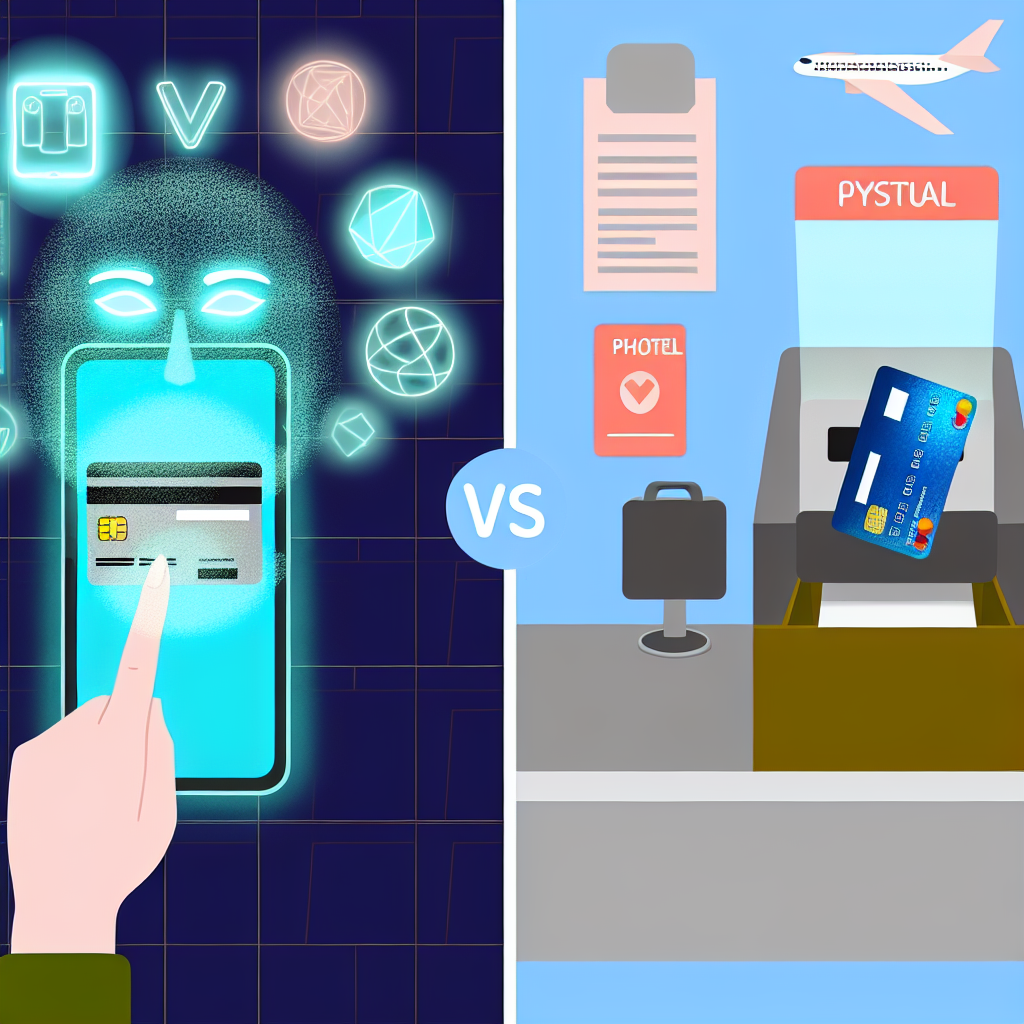
In today’s digital age, advancements in technology have revolutionized the way we handle our finances, including how we make payments when traveling. One significant development in this area is the rise of virtual cards, which are becoming increasingly popular among travelers. But are virtual cards truly better than physical cards when it comes to travel? Let’s explore the advantages and disadvantages of both options to help you decide which is the best choice for your next journey.
Virtual Cards
Advantages of Virtual Cards:
- Security: Virtual cards offer enhanced security features compared to physical cards. They are often equipped with advanced encryption technology and provide temporary card numbers for each transaction, reducing the risk of fraud.
- Convenience: Virtual cards can be easily accessed via mobile apps or online platforms, allowing travelers to make payments anytime, anywhere, as long as they have an internet connection.
- Tracking and Control: Virtual cards enable users to track their expenses in real-time and set spending limits, making it easier to stick to a budget while traveling.
- Acceptance: Virtual cards are widely accepted by online merchants and are compatible with most payment systems, making them a reliable payment method internationally.
- Reduced Risk of Loss or Theft: Since virtual cards exist in digital form, there is no physical card to lose or have stolen while traveling, providing an added layer of security.
Disadvantages of Virtual Cards:
- Internet Dependency: Using virtual cards requires an internet connection, which may not always be available or reliable in certain travel destinations.
- Compatibility: Some vendors, particularly in remote areas or small businesses, may not accept virtual card payments, limiting your purchasing options.
- Virtual Limitations: Virtual cards may have restrictions on ATM withdrawals or in-person transactions, which could be inconvenient in certain travel scenarios.
Physical Cards
Advantages of Physical Cards:
- Global Acceptance: Physical cards, such as credit or debit cards, are widely accepted around the world, making them a reliable payment method regardless of your destination.
- No Internet Required: Unlike virtual cards, physical cards do not rely on an internet connection, allowing you to make purchases even in areas with limited connectivity.
- Cash Withdrawals: Physical cards allow you to withdraw cash from ATMs, which can be convenient for obtaining local currency while traveling.
- Backup Option: Carrying a physical card as a backup provides added security in case your virtual card malfunctions or is not accepted at certain establishments.
Disadvantages of Physical Cards:
- Security Risks: Physical cards are more vulnerable to theft, loss, or skimming compared to virtual cards, putting your financial information at higher risk.
- Lack of Control: Without real-time tracking features, it can be challenging to monitor your expenses effectively when using physical cards while traveling.
- Foreign Transaction Fees: Some physical card providers charge additional fees for international transactions, increasing the cost of using your card abroad.
- Card Cloning: Physical cards can be cloned or copied by scammers, leading to unauthorized transactions and potential financial losses.
Which Is Better for Travel?
Deciding between virtual cards and physical cards for travel ultimately depends on your individual preferences, travel habits, and destinations. Here are some factors to consider when making your choice:
- Security Concerns: If you prioritize enhanced security features and reduced risk of fraud, a virtual card may be the better option for you.
- Convenience and Accessibility: Travelers who value convenience, real-time tracking, and easy access to payment methods may prefer virtual cards for their journeys.
- Destination and Connectivity: Consider the internet availability and payment acceptance in your travel destinations – if you are traveling to remote areas with limited connectivity, a physical card could be more practical.
- Financial Habits: Evaluate your spending habits, need for cash withdrawals, and comfort level with digital transactions to determine which type of card aligns best with your financial preferences.
Ultimately, many travelers find that a combination of virtual and physical cards offers the best of both worlds, providing flexibility, security, and backup options while exploring new destinations. Whichever option you choose, always prioritize safeguarding your financial information and exploring payment methods that suit your travel needs.





